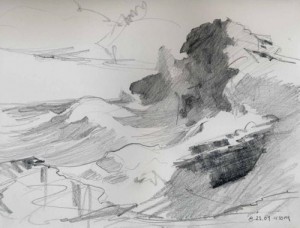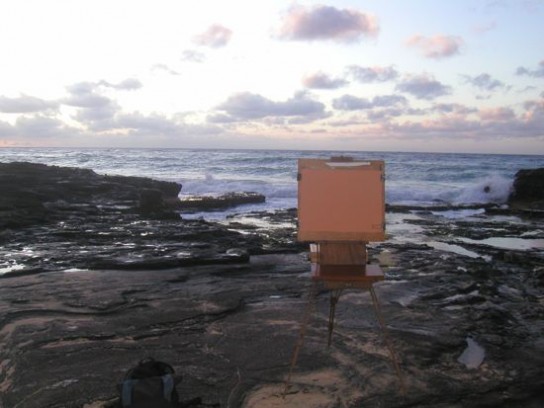After a week of overcast weather, I finally have been able to return to work on the painting. The conditions this morning were ideal, and so I essentially spent an hour session going after the biggest color notes and biggest shapes in the mountain itself, trying to get them established more fully. I’d placed the sky color in the studio, allowing a lot of breathing room with the warm underpainting.
The paint takes on a nice quality as I develop it, one touch over the next, hopefully bringing it closer to truth. I need to build carefully to avoid notes that take way from the large effect, which is such an easy thing to miss. Some knife work will be in order; some of the textures and planes receiving the light have just that sort of feel, as if the color were spread across the rough mountain face with a trowel .
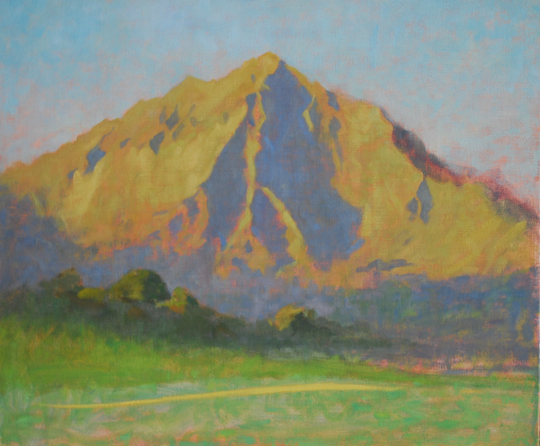 Konahui’nui oil on linen, 20 x 24″
Konahui’nui oil on linen, 20 x 24″
As for knife work, I seem to make a distinction between palette knives and painting knives. I use a palette knife for cleaning the palette, either a big 3″ trowel or an actual hardware store paint scraper. The painting knives are too delicate for anything but painting, and I reserve them for the occasions when I want the surface qualities they offer. I’m still pretty cautious/selective in their use, but can see that changing as I become more familiar with them. I’ve seen some remarkable use of painting knives in the hands of Thomas Moran, Frederick Leighton, and others.
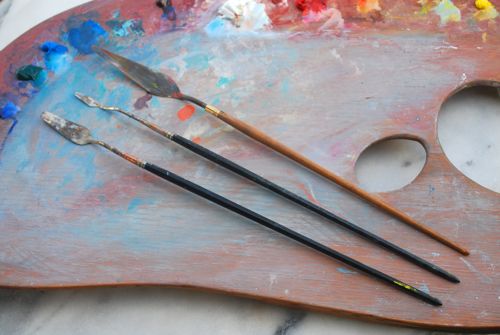
One idea is to mount painting knives onto the handles of paint brushes. I find it works wonderfully, especially if you have hands as large as mine!
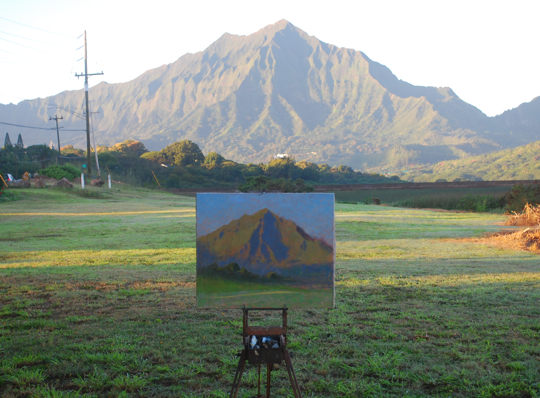


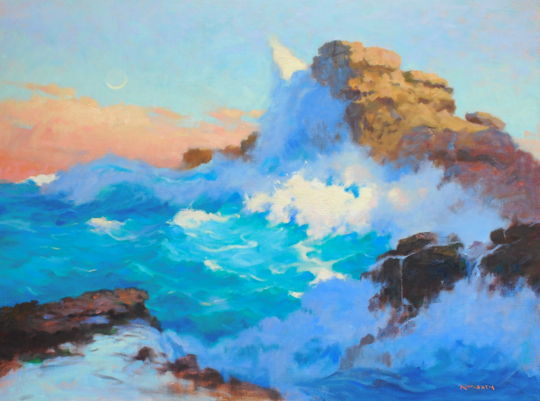
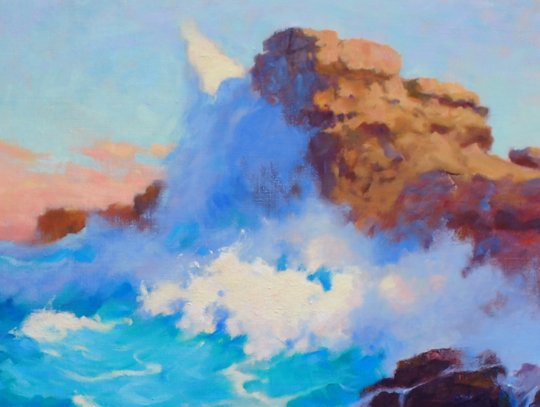
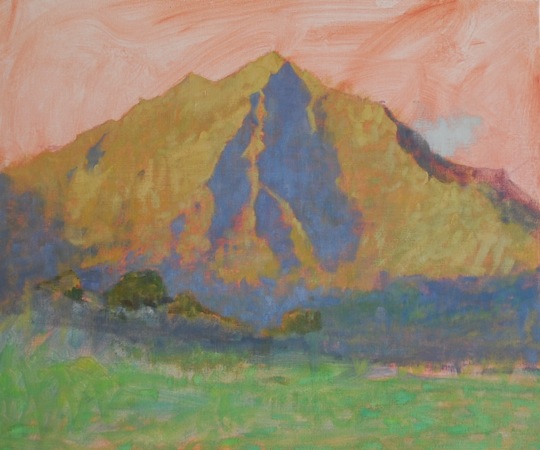
 detail
detail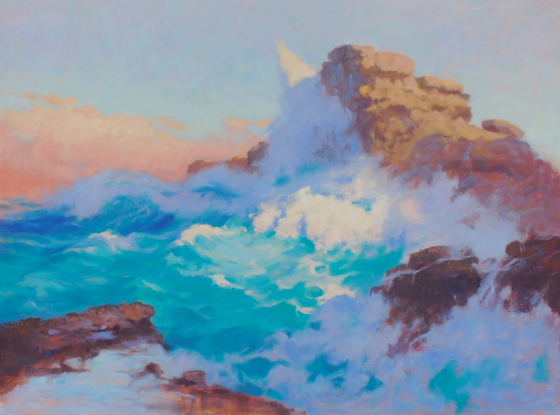 Sunlit Surf-Lana’i Lookout 28 x 32″ Oil on Linen
Sunlit Surf-Lana’i Lookout 28 x 32″ Oil on Linen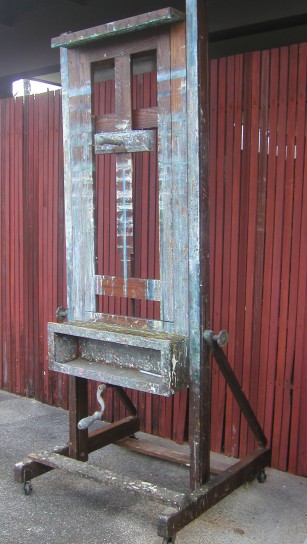
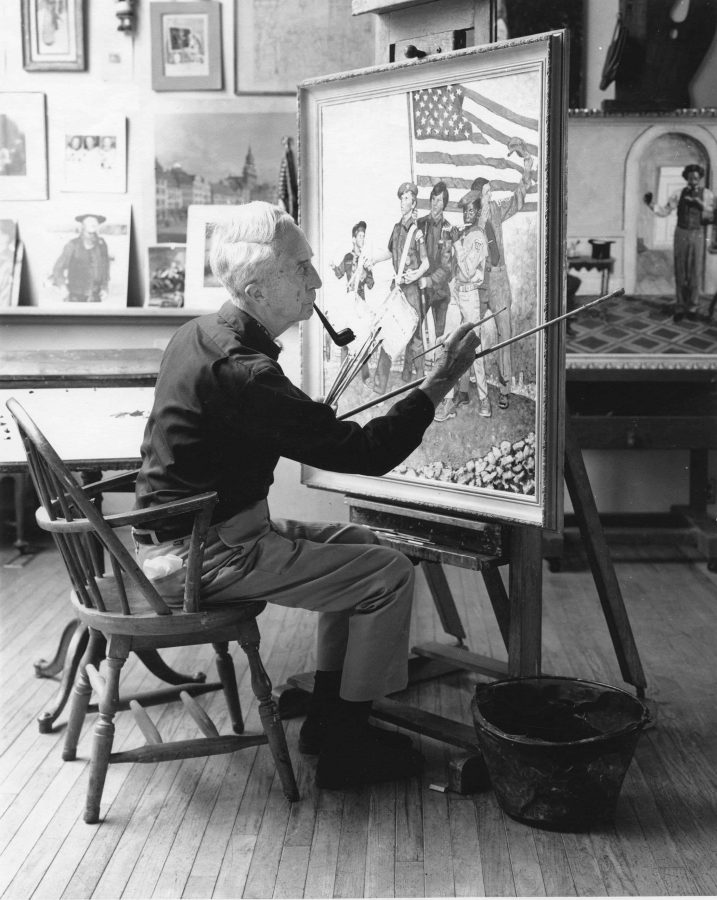
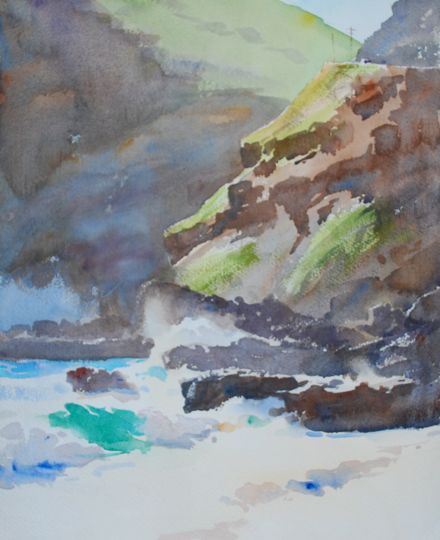
 Fifth day’s painting
Fifth day’s painting
